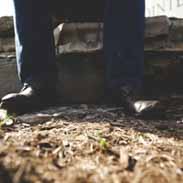chapter 4-Health Behavior Change models/theories – Flashcards
Unlock all answers in this set
Unlock answersquestion
Theories and Models Focusing on Health Behavior Change
answer
-First need to decide on what level to intervene -Consider the ecological perspective
question
ecological perspective levels
answer
-Intrapersonal level -Interpersonal level -Community levels -Institutional factors -Community factors -Public policy
question
Change Process Theories - Intrapersonal Level
answer
-Continuum theories -Stage theories
question
Continuum theories
answer
- use an approach that identifies variables that influence action & combines them into a prediction equation
question
Stage theories
answer
- are comprised of an ordered set of categories into which people can be classified, & which identifies factors that could induce movement from one category to the next
question
Models and theories w/ intrapersonal level
answer
-Health Belief Model -Theory of Planned Behavior -Transtheoretical Model -Precaution Adoption Process Model -Health Action Process Approach
question
Health Belief Model (HBM)
answer
-"addresses a person's perceptions of the threat of a health problem and the accompanying appraisal of a recommended behavior for preventing or managing a problem" -History - Developed by a group of psychologists in 1950 to help explain why people used or did not use health services -Theory of Planned behavior subgroup
question
Constructs of HBM
answer
-Perceived susceptibility -Perceived seriousness -Perceived barriers -Perceived benefits -Cues to action -Self-efficacy
question
Transtheoretical Model (TTM)
answer
-" is an integrative framework for understanding how individuals and populations progress toward adopting and maintaining health behavior change for optimal health" -has been useful explaining gradual development habitual patterns, e.g., diet & exercise
question
Has four major constructs -TTM
answer
1) Stages of change (this is why some call it the "Stages of Change Model"), 2) Processes of change, 3) Self-efficacy, 4) Decisional balance
question
Precaution Adoption Process Model (PAPM)
answer
-explains how people come to the decision to take action, & how they translate that decision to action -Most useful when a deliberate action is required, e.g., screening or immunization
question
Stages (7)
answer
1-Unaware of Issue 2-Unengaged by Issue 3-Deciding about Acting 4-Decide not to act 5-Decided to Act 6-Acting 7-Maintenance
question
Change Process Theories - Interpersonal Level
answer
-This group of theories is comprised of theories that "assume individuals exist within, and are influenced by, a social environment. The opinions, thoughts, behavior, advice, and support of people surrounding an individual influence his or her feelings and behavior, and the individual has a reciprocal effect on those people" -Examples Social learning, social power, interpersonal communication, social networks, & social support
question
Type of Change Process Theories - Interpersonal Level
answer
Social Cognitive Theory (SCT)
question
Social Cognitive Theory (SCT)
answer
- describes learning as a reciprocal interaction among an individual's environment, cognitive processes, and behavior -People are thinkers; expectations of consequences
question
Types of Reinforcement-SCT
answer
-Direct reinforcement -Vicarious reinforcement (observational learning or social modeling) -Self-reinforcement
question
Often used constructs
answer
Behavior capability Expectations Expectancies Locus of control Reciprocal determinism Self-control or self-regulation Emotional coping response Self-efficacy
question
Change Process Theories - Community Level
answer
-This group of theories includes three of the ecological perspective levels- institutional (e.g., rules & regulations), community (e.g., social networks & norms), & public policy (e.g., legislation). -Examples Theories associated with these factors include theories of community organizing and community building -Diffusion theory
question
Diffusion Theory
answer
-by Rogers - it explains the pattern of adoption of the innovations
question
Diffusion Theory graph-
answer
-bell-shaped curve -Population Innovators (-2 sd from mean) (2-3%) Early adopters (-2 to -1 sd from mean) (14%) Early majority (-1 sd to mean) (34%) Late majority (mean to +1 sd) (34%) Laggards (> +1 sd) (16%)
question
Community Readiness Model
answer
-Edwards -A stage model for communities -Like individuals, communities are at various stages of readiness for change
question
Nine stages-Community Model
answer
1) No awareness, 2) Denial, 3) Vague awareness, 4) Preplanning, 5) Preparation, 6) Initiation, 7) Stabilization, 8) Confirmation/Expansion, and 9) Professionalism



